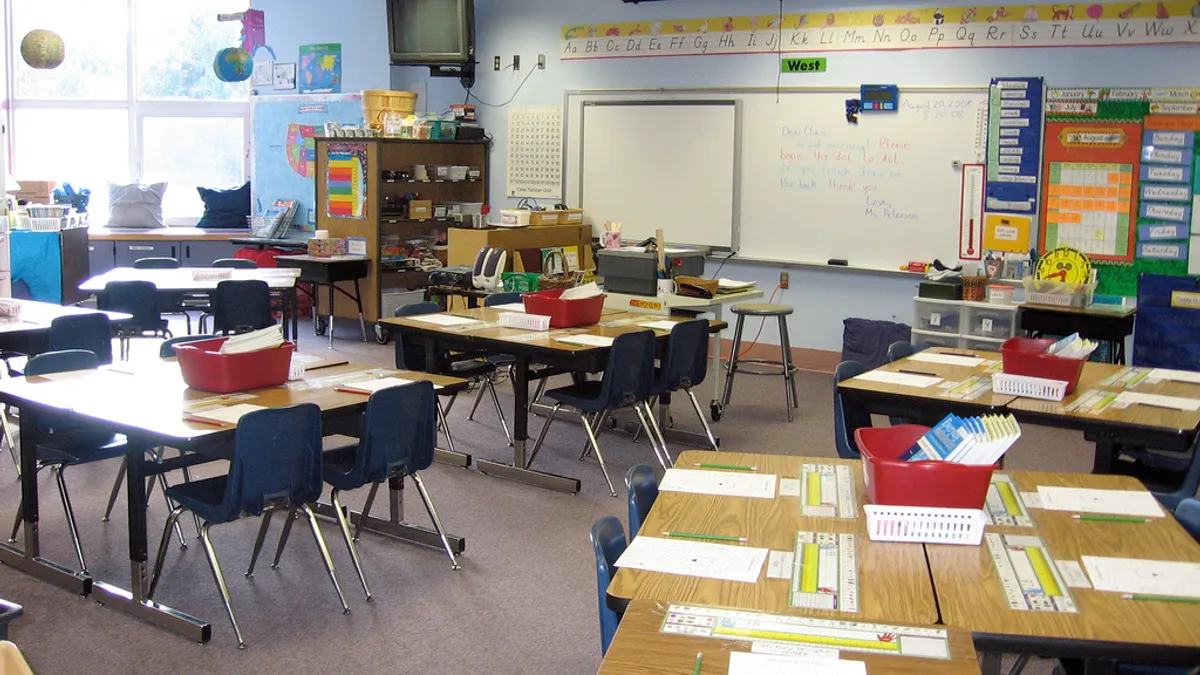Dive Brief:
-
Principals’ greatest COVID-19-related concerns right now center on overwhelmed teachers, tight budgets and equity in instruction, according to school leaders who spoke during a virtual Capitol Hill briefing Oct. 22 hosted by the American Federation of School Administrators, the National Association of Elementary School Principals and the National Association of Secondary School Principals to mark National Principals Month.
-
Teachers are stretched thin because they are trying to accommodate all, but especially vulnerable, students in both online and in-person learning formats. Many teachers are also spending their own money to equip their home classrooms with the materials needed to adequately teach remotely, the principals said.
-
Addressing the growing mental health needs of students and staff who have lost loved ones, whose finances are precarious, or who feel distraught is a critical need but one the principals say they are not prepared for.
Dive Insight:
In a candid conversation about the stress elementary and secondary school leaders are experiencing because of the pandemic, three principals explained their challenges, needs and some areas of hope.
Cesar Rivera, principal at Samuels Elementary School in Denver, Colorado, spoke about the continual anxiety educators are feeling about planning for both in-person and hybrid learning and serving students during this difficult time.
“This has taken quite a toll on our teachers and a toll that quite frankly, I believe, most, if not all principals are not equipped to handle or not equipped to support teachers in the way in which they need support,” said Rivera, whose district is operating both in-person and virtual learning formats currently.
Students are suffering too, he said. His school recently had to do a suicide risk assessment for a student. “Can you imagine supporting a child and family in the remote learning context around a suicide risk review?” he said.
Atholton High School in Columbia, Maryland, which is currently in an all-virtual mode, is fortunate because it has a part-time psychologist, a full-time nurse and five counselors, said Principal Robert Motley, who is also president of NASSP. “I have the support staff in place,” he said. “Even with that, they are overwhelmed. We could always use more.”
But adding more staff is not possible because school budgets are already stretched, the principals said. Rivera said that because of a drop in enrollment, his school would be $200,000 short in funding but because the state of Colorado allows schools to factor an average enrollment over several years during times of emergency, the school was able to maintain its projected budget. “Albeit still, I believe, inadequate,” Rivera said.
For example, he said if he could add an interventionist for six students per group whose reading and math skills are at or below grade level, the school would have a total of 13 interventionists at a cost of $1.3 million.
“When we think about the resources that we have or don’t have, we think of how thinly spread those are and how quickly they go away,” Rivera said.
Education organizations have asked Congress for at least $175 billion in additional stimulus funding to help meet the learning, technology, staffing, food and social-emotional demands of the pandemic. “Schools need Congress now more than ever to put forward a package that can meaningfully support schools but not only meaningfully support schools but perhaps sustainably support schools such as that we do have more intervention teachers that can address the gap students have,” Rivera said.
Kimbrelle Barbosa Lewis, principal of Cordova Elementary School in Cordova, Tennessee, said her school, which is operating in a virtual setting, has had to get creative to fulfill unmet needs. The school has extra tutoring during Saturday academies, and over fall and winter break, for all students to catch up academically.
Additionally, teachers of English learners are making home visits, and team members of a student’s individualized education program are meeting virtually to make sure students with disabilities are being supported, said Lewis, who is also president of NAESP.
“Our district is doing a fantastic job to put things into place for learning loss,” Lewis said. “You work with what you have, and that’s what we’ve been doing.” Still, she says there are struggles.
“There’s never enough staffing, and that is one reason why the relief from Congress is very essential,” she said.








 Dive Awards
Dive Awards





